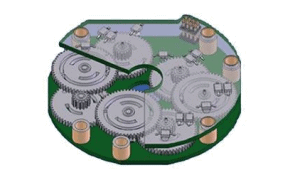- Welcome to Pulse Robot
- +86-23-63207381
- +8613677602178
- sales@pusirobot.com
What kind of multi turn absolute encoder do you use?
According to our previous introduction, everyone knows that there are two types according to the principle of multi-turn absolute encoder: 1: According to the principle of multi-turn absolute encoder, it is divided into the following two types:

For this type of encoder that achieves multi-turn absolute reading through mechanical gears, the maximum number of turns is generally 4096 (12bit). After 4096 turns, it does not return to zero, but repeatedly outputs a maximum value of 4096. Therefore, after exceeding 4096, this type of encoder will not be regarded as a multi-turn absolute value type and will fail;
2. Pulse counting type with battery This type of multi-turn absolute encoder with battery counting, the essential core is still a single-turn absolute value, but in addition to the encoder itself, it also has an additional battery and an embedded electronic counter, which outputs the corresponding output when one revolution has passed. The number of pulse recording laps. The multi-turn absolute encoder using this kind of principle theoretically does not have the maximum number of turns (generally it will not reach the working condition of the counter overflowing turns), but the disadvantage is that you need to replace the battery by manual within a certain period of time. If the counter is powered down due to the power supply, the so-called absolute value type will be invalid; The above two types include almost all multi-turn absolute encoders on the market. PS: There is another kind based on Wiegand Effect. The encoder under this principle can allow absolute multi-turn counting without mechanical components or batteries. Roughly speaking, the principle is that the moving encoder shaft generates energy through a specially adjusted wire. This special energy will trigger a specific counter and write data into the non-volatile memory-of course, it is just to broaden the horizon. The current author Have not seen practical applications based on this principle
